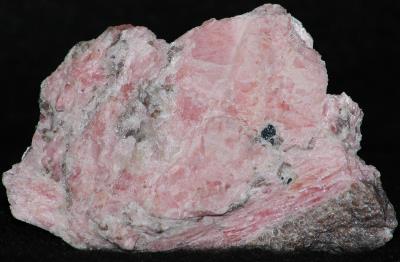 | | 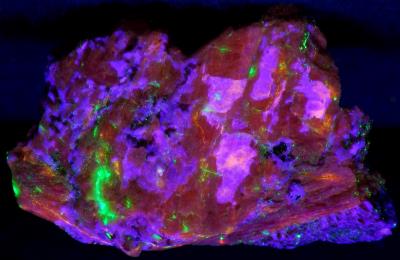 |
Bustamite (pink), hardystonite (gray to white), with minor willemite, franklinite (black) and clinohedrite, from Franklin, NJ. From the collection of, and photo by Robert A. Boymistruk.
| | Bustamite, hardystonite, with minor willemite, franklinite and clinohedrite, from Franklin, NJ under shortwave UV light. The bustamite fluoresces cherry red, hardystonite (blue and lavender), clinohedrite (orange) and the willemite green, the franklinite is non-fluorescent. From the collection of, and photo by Robert A. Boymistruk. |
|
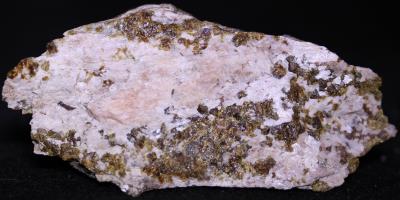 | | 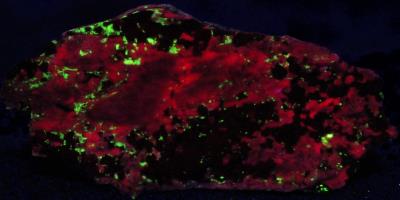 |
Bustamite (pink), andradite garnet (straw to dark brown) and minor willemite from Franklin, NJ. 3 1/2" x 2 1/4". From the collection of, and photo by WP.
| | Bustamite, andradite garnet and minor willemite from Franklin, NJ under longwave UV light. The bustamite fluoresces red and willemite green, the andradite garnet is non-fluorescent. 3 1/2" x 2 1/4". From the collection of, and photo by WP. |
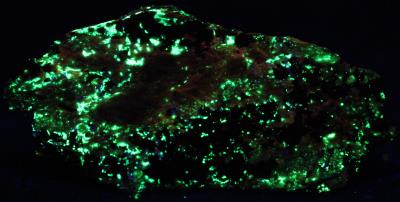 |
Bustamite, andradite garnet and minor willemite from Franklin, NJ under shortwave UV light. The bustamite scarcely fluoresces red and willemite green, the andradite garnet is non-fluorescent. 3 1/2" x 2 1/4". From the collection of, and photo by WP
|
|
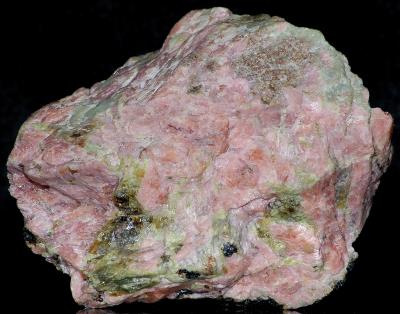 | | 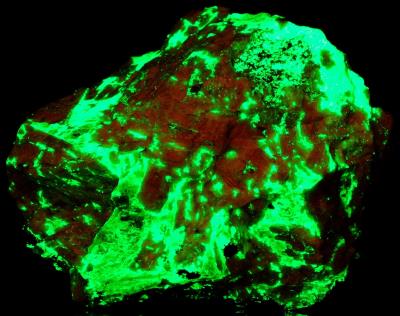 |
Bustamite (pink), willemite (motor oil green to light green) and minor franklinite (black), from Franklin, NJ. 4" x 3 1/4". From the collection of, and photo by Robert A. Boymistruk.
| | Bustamite, willemite and minor franklinite, from Franklin, NJ under longwave UV light. The bustamite fluoresces dark red and the willemite green, franklinite is non-fluorescent. 4" x 3 1/4". From the collection of, and photo by Robert A. Boymistruk. |
|
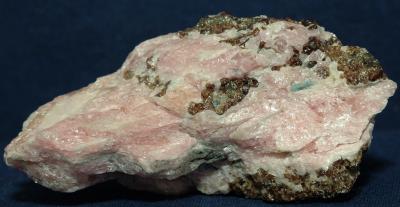 | | 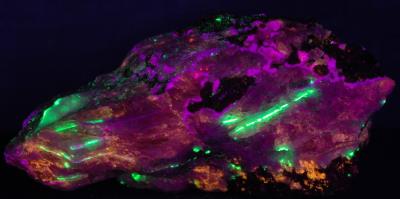 |
Bustamite (pink), hardystonite, clinohedrite, andradite garnet (brown), willemite and an apatite crystal (light teal) from Franklin, NJ. 4 1/8" x 2 1/4". From the collection of, and photo by Robert A. Boymistruk.
| | Bustamite, hardystonite, clinohedrite, andradite garnet, willemite and an apatite crystal from Franklin, NJ under shortwave UV light. The bustamite fluoresces dark red, hardystonite purple, clinohedrite orange and the willemite green, the garnet and apatite are non-fluorescent. 4 1/8" x 2 1/4". From the collection of, and photo by Robert A. Boymistruk. |
|
 | | 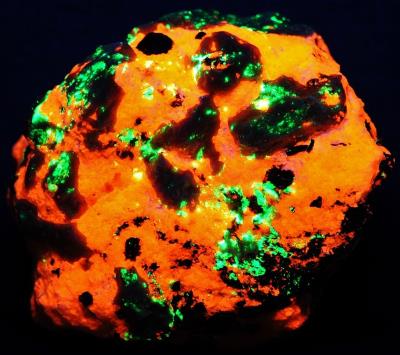 |
Bustamite crystals (pink), calcite (white), hendricksite mica (dark brown) with minor andradite garnet (brown), willemite (light yellow) and franklinite (black) from Franklin, NJ. 4" x 3". From the collection of, and photo by Robert A. Boymistruk.
| | Bustamite crystals, calcite, hendricksite mica with minor andradite garnet, willemite and franklinite from Franklin, NJ under shortwave UV light. The calcite fluoresces orange and the willemite green, the bustamite, franklinite, mica and garnet are non-fluorescent. 4" x 3". From the collection of, and photo by Robert A. Boymistruk. |
|
